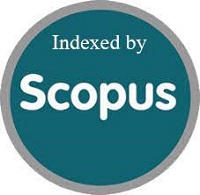Measuring the Intention for Innovative Work Behavior: Scale Development for Indonesian Employees
DOI:
https://doi.org/10.15408/jp3i.v14i1.38023Keywords:
construct validity, confirmatory factor analysis, intention innovative work behavior, reliabilityAbstract
The current business era is dynamic and filled with uncertainty, and innovating is no longer an option but a
solution to survive and compete. Innovation in the organisational context is displayed by employees in their
work, known as Innovative Work Behaviour (IWB). However, the measurement tool for innovative work
behavior focuses on past behavior, whereas innovative behavior is characterized by uncertainty. Previous
behavior may not necessarily predict future behavior. Meanwhile, intention is the closest factor to predicting
future behavior. Some researchers have adjusted the measurement of innovative work behavior into the
intention for innovative work behavior. But its reliability and validity have not been tested, and it has not been
adapted to the Indonesian language. Therefore, this quantitative study aims to develop a measurement tool of
intention for innovative work behavior in Indonesia based on the Su et al. Scale (2019). Using the convenience
sampling method, 1,071 participants who had worked for at least 1 (one) year in their organisation participated
in this study. The results show that the I-IWB Scales had good reliability (α = 0.840). Confirmatory factor
analysis also revealed that the scale fit the one-factor model (RMSEA = 0.054 < 0.070; 90% CI 0.044, 0.066),
(CFI = 0.970 > 0.950), (TLI = 0.955 > 0.900). Construct validity shows the model fit as a unidimensional
scale. Thus, based on the analysis results, it can be said that the I-IWB Scale is still reliable and valid for
measuring the construct of intention for innovative work behaviour for Indonesian employees.
References
AlEssa, H. S., & Durugbo, C. M. (2021). Systematic review of Innovative Work Behavior Concepts and contributions. Management Review Quarterly, 72(4), 1171–1208. https://doi.org/10.1007/s11301-021-00224-x
Ajzen, I. 1991. The Theory of Planned Behavior. Organizational Behavior and Human Decision Processes, 50: 179-211. https://doi.org/10.1016/0749-5978(91)90020-T
Banholzer, M., Birshan, M., Doherty, R., & LaBerge, L. (2023, January 10). Innovation: Your
solution for weathering uncertainty. McKinsey & Company. https://www.mckinsey.com/capabilities/strategy-and-corporate-finance/our-insights/innovation-your-solution-for-weathering-uncertainty
Bryman, A. and Bell, E. (2011) Business Research Methods. 3rd Edition, Oxford University Press, Oxford.
Etikariena, A., & Muluk, H. (2014). Hubungan antara memori organisasi dan perilaku inovatif karyawan. Hubs-Asia, 18(2): 77-88. https://doi.org/10.7454/mssh.v18i2.3463
Hair, J. F., Ringle, C. M., & Sarstedt, M. (2011). PLS-SEM: Indeed a silver bullet. Journal of Marketing Theory and Practice, 19(2), 139–152. https://doi.org/10.2753/mtp1069-6679190202
Hooper, D., & Coughlan, J. & Mullen, M. (2008). Structural equation modelling: Guidelines for determining model fit. In The Electronic Journal of Business Research Methods, 6, 53-60, 2008.
Janssen, O. (2004). How fairness perceptions make innovative behavior more or less stressful. Journal of Organizational Behavior, 25(2), 201–215. https://doi.org/10.1002/job.238
Kaplan, R.M and Saccuzo, D.P. 2005. Psychological Testing, Principles, Aplications. And Issues. (6th ed.). Thomson Wadsworth, BelmontUSA.
Kline, R. B. (2011). Principles and practice of structural equation modeling (3rd ed.). Guilford Press.
Lu, C.-C., & Luh, D.-B. (2013). Innovative Behavioral Intention and Creativity Achievement in Design: Test of an Integrated Model. Lecture Notes in Computer Science, 535–544. https://doi.org/10.1007/978-3-642-39229-0_57
Muchiri, M. K., McMurray, A. J., Nkhoma, M., & Pham, H. C. (2020). Mapping antecedents of Innovative work behavior: A conceptual review. The Journal of Developing Areas, 54(4). https://doi.org/10.1353/jda.2020.0047
Ouellette, J. A., & Wood, W. (1998). Habit and intention in everyday life: The multiple processes by which past behavior predicts future behavior. Psychological Bulletin, 124(1), 54–74. https://doi.org/10.1037/0033-2909.124.1.54
Salvador, F., & Sting, F.J. (2022, September 19). How your company can encourage innovation from all employees. Harvard Business Review. (2022, September 22). https://hbr.org/2022/09/how-your-company-can-encourage-innovation-from-all-employees
Srirahayu, D. P., Ekowati, D., Sridadi, A. R. (2023). Innovative work behavior in public
organizations: A systematic literature review. Heliyon, 9(2). https://doi.org/10.1016/j.heliyon.2023.e13557
Su W, Lin X and Ding H (2019) The Influence of Supervisor Developmental Feedback on Employee Innovative Behavior: A Moderated Mediation Model. Front. Psychol. 10:1581. https://doi.org/10.3389/fpsyg.2019.01581
Williams, B., Onsman, A., & Brown, T. (2010). Exploratory factor analysis: A five-step guide for novices.
Journal of Emergency Primary Health Care, 8(3), 1-13.
Downloads
Published
Issue
Section
License
Copyright (c) 2025 Arum Etikariena, Aflaha Hadini Kusuma, Anak Agung Istri Ratna Kumala Dewi, Devika Nur Shabrina, Rana Hafizhah, Zidan Raleto Seno

This work is licensed under a Creative Commons Attribution-ShareAlike 4.0 International License.



